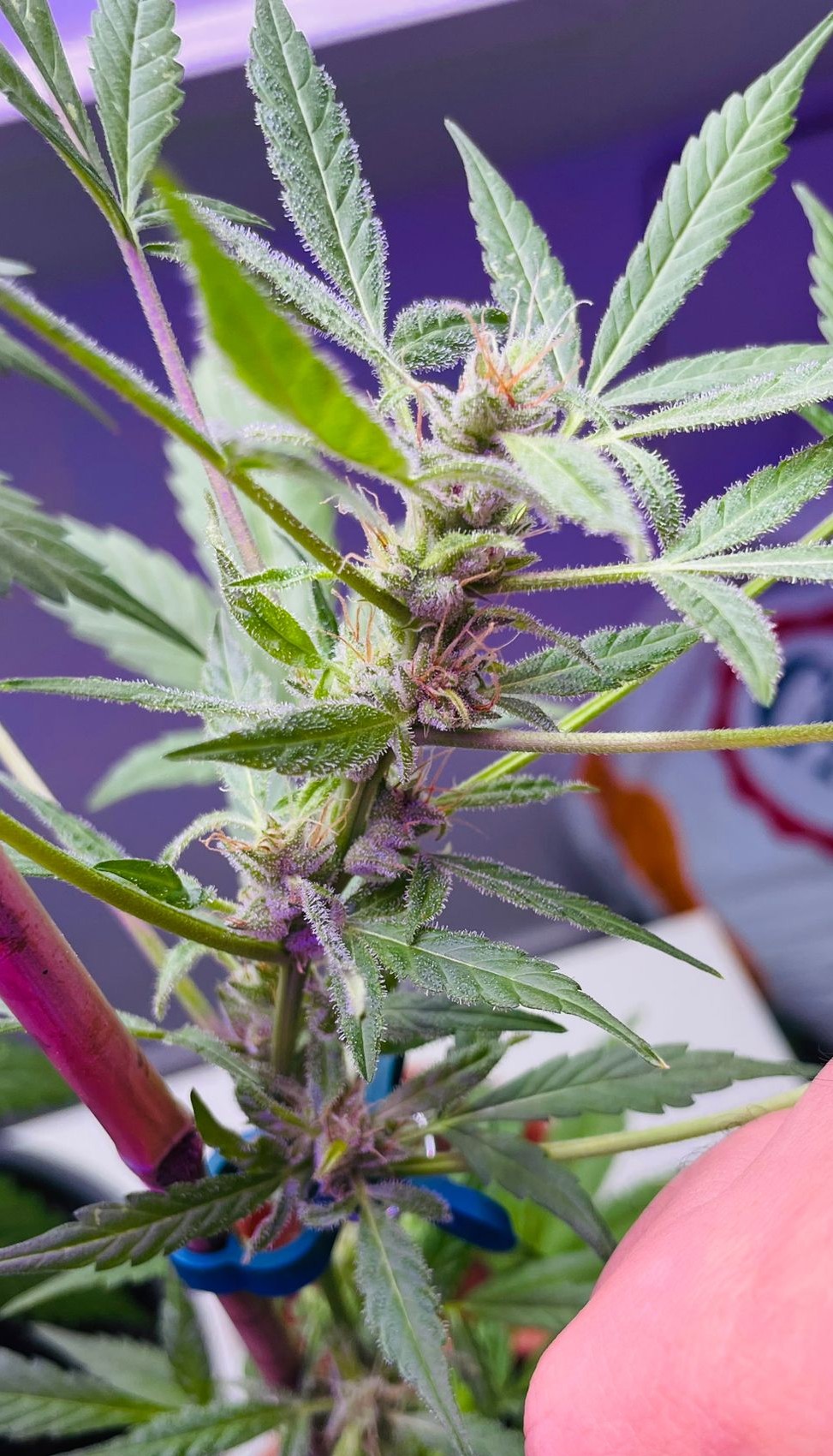What's a Calyx?
Trees
A community centered around cannabis.
In the spirit of making Trees a welcoming and uplifting place for everyone, please follow our Commandments.
- Be Cool.
- I'm not kidding. Be nice to each other.
- Avoid low-effort posts
Cannabis growers tend to use the words bract and calyx interchangeably. In actuality, the little oval shape with hairs coming out is actually a bract. In cannabis the actual calyx is a sheath of cells around the thing that becomes the seed once fertilized.
A cannabis flower is just a collection of bracts. We tend to colloquially call the fat pair of little bracts that form at the base of the buds where they branch into leaves, the calyx
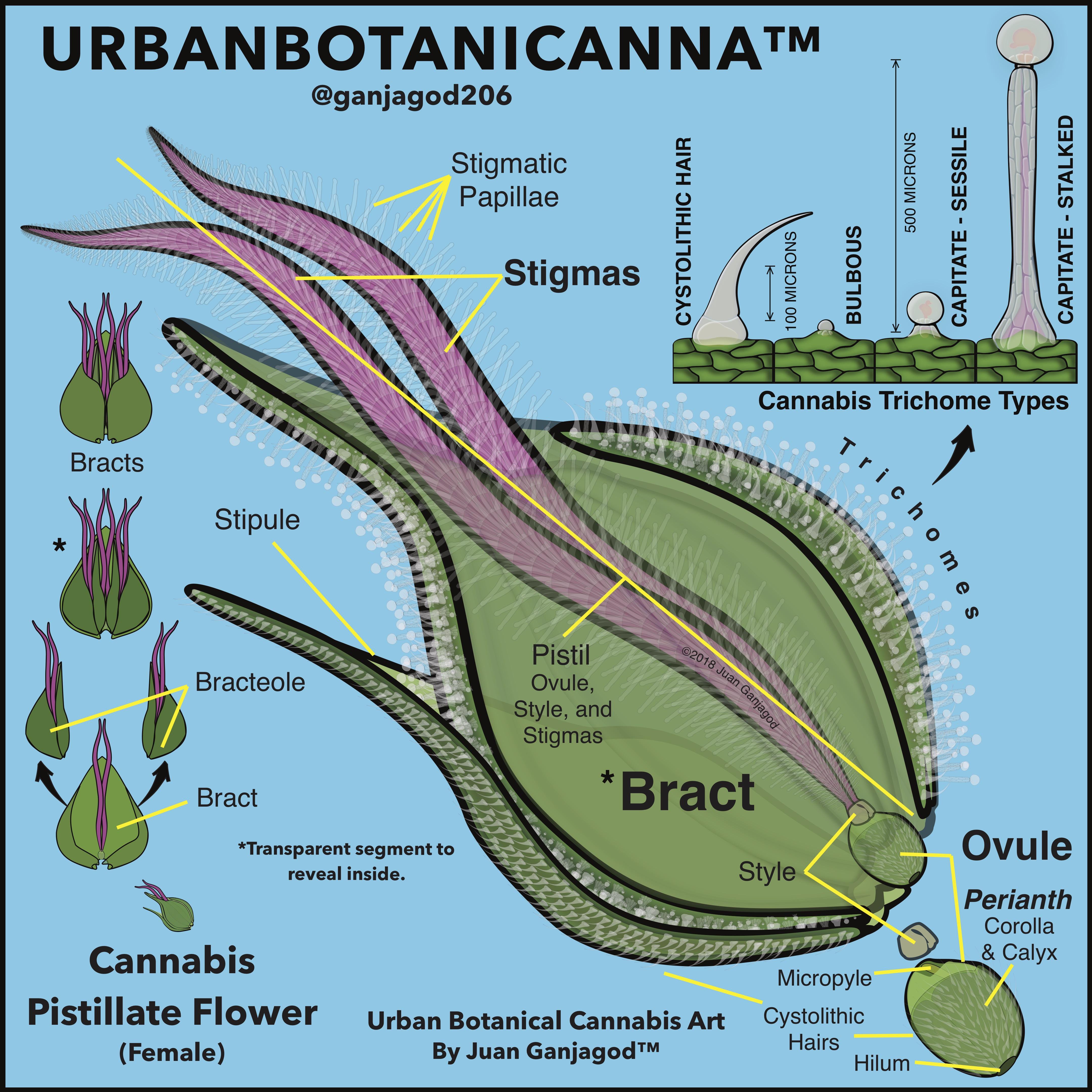
The bract is the outer leaves, whether the plant is seeded or not the calyx expands.
When someone says it’s a bract, it’s usually wrong, the term is calyx, but bract CAN be used since the petals in the outside aren’t usually pulled away, but on the ripe ones, they are.
Oh yeah, super common argument, old heads especially. That image is at least a decade old and has served well!
Most scientific studies and even most modern literature identify that structure in the image as the bract. Whereas the cannabis calyx is a few cells thick and covers the seed, part of the perianth. it's not visible until a seed has expanded.
Lemme give you an example:
https://www.frontiersin.org/journals/plant-science/articles/10.3389/fpls.2019.00350/full
It's funny tho, this study calls out the argument.
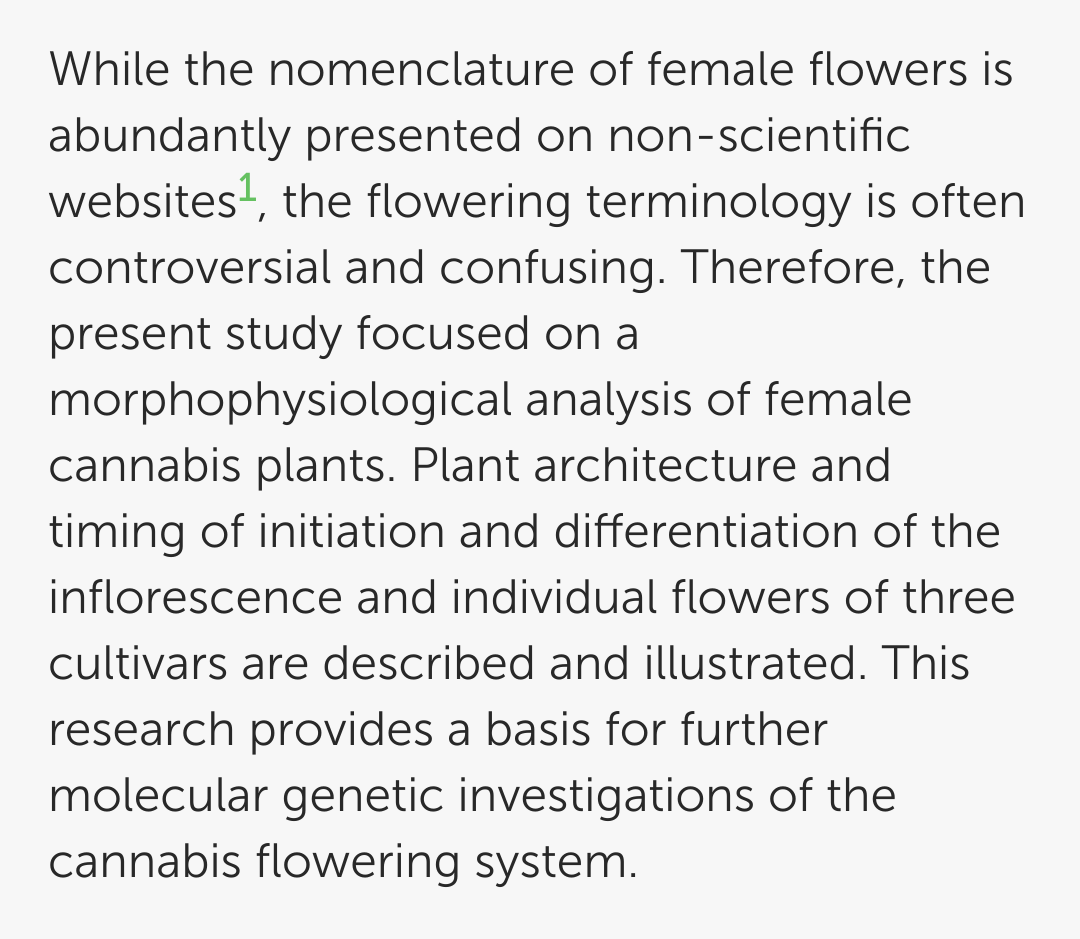
Despite all this you still see it both ways, or bract (calyx)/calyx(bract). Calyx was the term for a long time.
It’s not an argument, only cannabis growers (incorrectly) call it a bract, it’s a calyx by plant nomenclature.
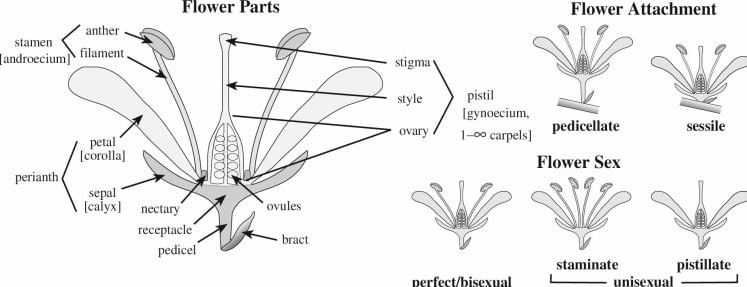
Maybe don’t just read cannabis material? You can learn a lot more from general botany. Uneducated growers have been calling it incorrectly for so long, that people following along are now incorrectly saying it’s the correct term. And people like you perpetuate it. New growers see old growers using it, reference that, and now you’re quoting it like it’s gospel.
It’s a calyx, the bracts protect them, sorry dude.
Edit, holy fuck dude, read your own link, picture from it
https://www.frontiersin.org/files/Articles/447153/fpls-10-00350-HTML/image_m/fpls-10-00350-g002.jpg
The bracts are below the singled flower (calyx)
Actually, we're having an argument about it right now!
Cannabis growers, botanists, scientists. As research on the plant has been allowed in the last decade, these specfic structures have been defined, that's why it's the modern definition.
Your own fucking link says you’re wrong dude….
https://www.frontiersin.org/files/Articles/447153/fpls-10-00350-HTML/image_m/fpls-10-00350-g002.jpg
You’re just wrong, there’s no argument, the only source of it being a “bract” is uneducated old heads. And you are proof of it, and you are still trying to perpetuate the wrong term. It’s never been a bract dude.
It’s been defined by those people for thousands of years, what’s this about modern…? The old heads that were wrong and have tried changing it? But scientists and botanists just point to the thousand year old definition, and say, no, you’re fucking wrong.
Wow this argument is making you really mad, the paper addresses that in the beginning, you'll notice it's tracking the growth of the initial structure, they are defining the type of bract it is.
They are purposefully avoiding calling the "flower" anything because of the debate between calyx and bract (what i was trying to say). In this they are being extremely specfic about structures and are defining a bract primordium and a perigonal bract.
That's in the bit you cut out.
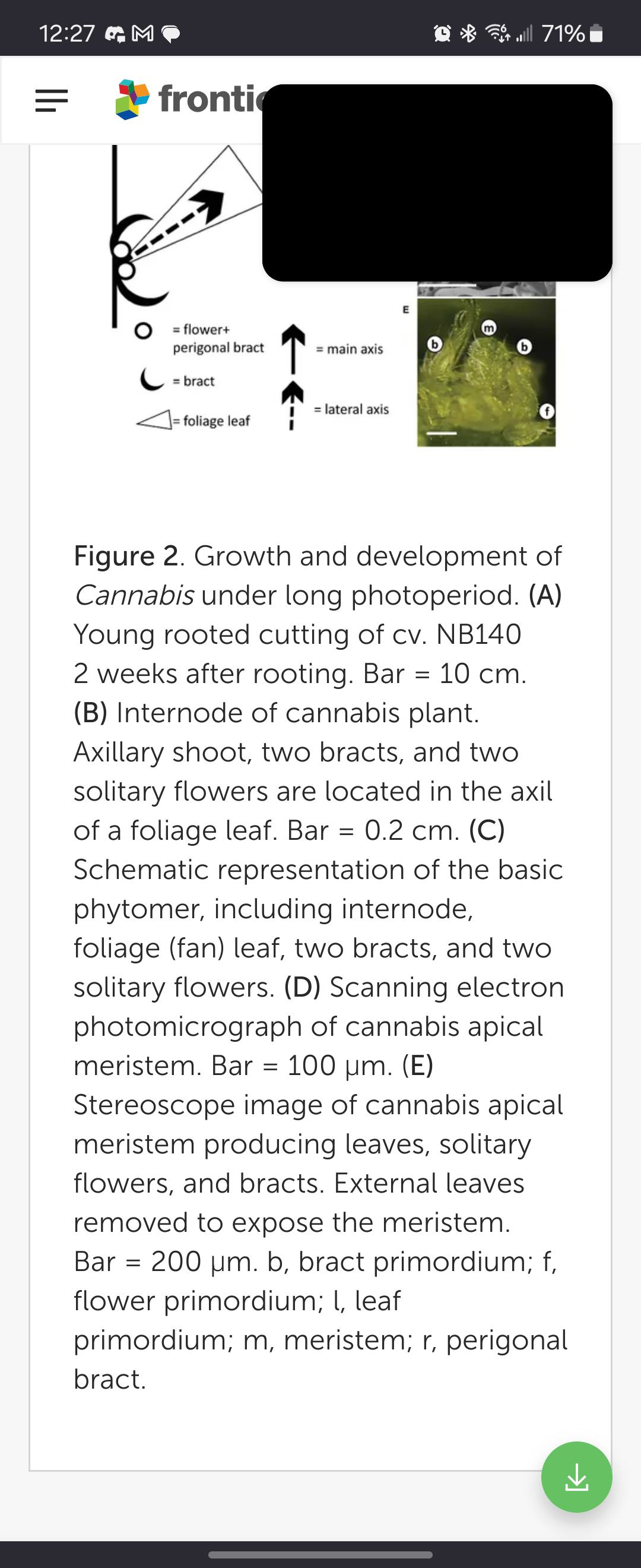
They give it away with the term perigonal bract, that's the part most of the inflorescence grows on, aka the trichomes.
Edit: check out the wiki on the hemp species of plant, I know WP isn't exactly a perfect source, but like this is what we know now that we've studied the biology of the plant:
https://en.m.wikipedia.org/wiki/Cannabaceae
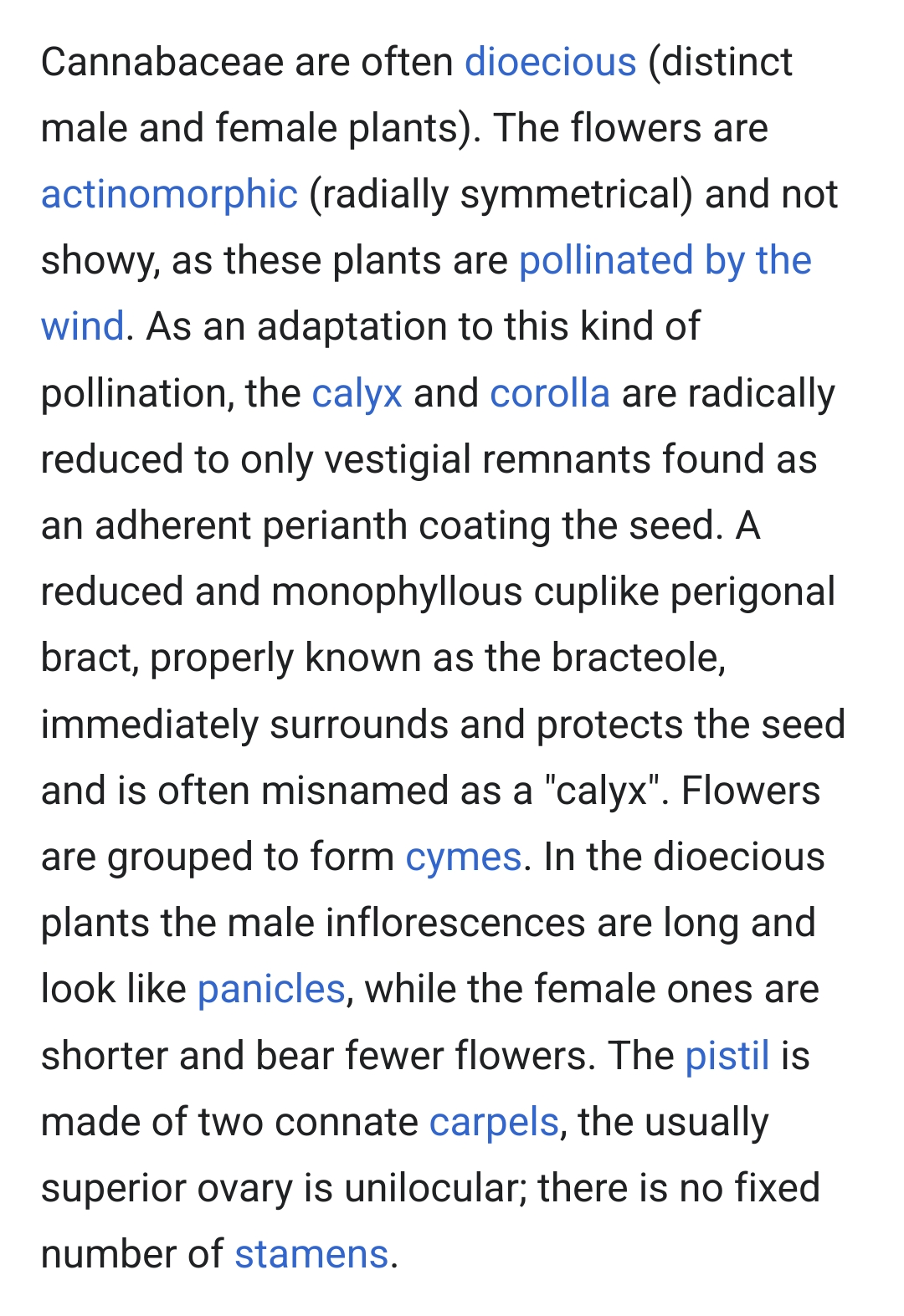
They use the same term for entire growth process dude….
The call it a flower, because a flower includes the calyx, like explained by my multiple images.
Not once does your link show any part of the flower as a bract, it’s always underneath the flowers.
I didn’t leave anything out, it’s an image. I come choose any from any part of the growth, and they all show the same part of branch being the bract. Which isn’t related to flowers.
A solitary flower should have a bract itself…? No? Because how can it exist if you’re saying the outside is the bract…? Your article literally shows the opposite of what you’ve claimed in your original image…. This is how stupid the argument is. It’s not a bract….
I love how you can’t provide anything that says a bract is part of the flower (other than the whole incorrect thing) or what the calyx is. And everything you’ve provided has said something different… pick one dude and stick with it.
I just proved you wrong with your own gotcha example and additional literature, but yeah, this is the nature of the calyx/bract argument.
The additional stuff says different than your other two sources…? Sure that proves me wrong? and what gotcha example?
Your paper shows a bract under the flower structure itself, like my image. So how does that make the outer flower coating a bract…? Please explain with your own words instead of copying pasting others.
Because it seriously looks like you’re just regurgitating information without understanding it. Every source you’ve provided has said and shown something different dude…
Again, no argument, just someone being wrong. It’s like when a flat earther tries to “explain” or argue their side. Sure you can call it what you want, but you’re still never going to be correct…
Man, I'd swear that's the definition of an argument!
Well, this has been an excellent argument. Thank you for the time!
Excessive ruderalis trait, is the plant an auto by chance?
I don't think so. But maybe the seeds have gotten mixed up so it is not impossible
Do you know the genetics of the plant? That looks like a "grinspoon" or "string of pearls" mutation. There's another version called willowing, but the leaves are twisted when it's that.
Check out the Dr. Grinspoon strain. That thing might be a pain to trim, but it should smoke great!
Oh yeah, I have heard of Dr. Grinspoon. I think the strain is called Durban Dew by dutch passion and usually it doesn't do this
